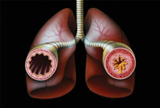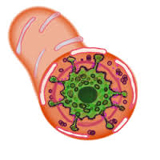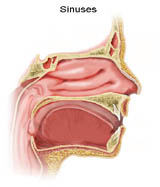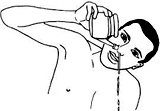Medicine and Health
Airway mucus hyper-secretion and its management through exercise interventions
Abstract
In mucus-related respiratory health problems, the following changes take place in the airways: inflammation, hyper-secretion of mucus and bronchospasm. Together, these factors cause breathlessness. The author has devised some exercises which are therapeutic tools. They help to cleanse the adhesive mucus from the primary sites of colonisation of pathogens along the mouth, nose, pharynx, sinuses and bronchial airways. They reduce C-reactive protein resulting in decreased inflammation and strengthen the remodelled airways, resetting the biological ageing process. In all, these procedures comprise upper-airway passages cleaning exercises, bronchial airways cleaning exercises and physical, aerobic and yogic exercises. As any mucus-related respiratory health problem commences from the upper-airway passages and spreads to the tracheo bronchial tree, they constitute the same pathway. The mucociliary clearance mechanism becomes defunct when excess and sticky mucus forms. Once cleaned, the defunct cilia become active and ciliate mucus towards the nasal passages, which can be blown out easily. The bronchial airways cleaning exercises help in draining out total mucus from the airways and respiratory and other diseases originating from its pathway come under control. A healthy ageing process commences.
Introduction
The objective of this article is to create awareness among people about alternative and complimentary methods to control respiratory diseases and to lead a healthy life. According to a WHO estimate (2007), 235 million people have asthma worldwide (1) and 210 million people have chronic obstructive pulmonary disease (COPD), while millions have allergic rhinitis and others often-under-diagnosed chronic respiratory diseases. These diseases cause structural and functional changes in the remodelled airways. The mechanics of respiration get affected, leading to mismatches between ventilation and perfusion and which may also increase alveolar dead space resulting in hypercapnia, hypoxia and hypoxemia. They may become a lifelong challenge for some. The severity of the problems increases with environmental fluctuations (ozone, a colourless gas-level increase in the atmosphere).
Being now 76 years of age and as a patient of asthma, I have devised exercises by which the problems can be brought under control within minutes. The exercises pertain to the cleaning of upper airway passages which are primary sites of colonisation of pathogens especially the mouth, nose, pharynx from excess mucus These diseases cause the following changes in the airways:
Inflammation
This is a physiological process that plays the role of immunological defence against infection, injury or allergy. It is one mechanism the body uses to protect itself from invasion by foreign organisms and to repair tissue trauma.
Hyper-secretion of mucus
This is one of the major pathological features of upper airway disease. It is the result of goblet cell hyperplasia in respiratory mucosa and is a prominent feature of inflammation. Chronic mucus hyper-secretion is a potential risk factor for accelerated loss of lung function. It increases risk of hospital admission as a result of lower respiratory tract infections. Its viscosity causes extensive ciliary damage and impairs mucus clearance.
Chronic mucus hyper-secretion is a common feature in the elderly. The thick viscous mucus in the lungs is conducive to pathogens.
Bronchospasm
This is an additional factor, particularly in asthma patients in whom the airways are hyper-reactive. It is caused as a result of irritation or trauma of smooth muscles around them. With inflammation, bronchospasm and the excess mucus secretions retained in the airways, the patency of the airways gets reduced. The airflow slows down towards the periphery of the bronchial tree to end as diffusion. As a result of these changes, asthma patients suffer from breathlessness.
Methods
These exercises are therapeutic tools and are a potent medication in history. These are muco-kineses and a recipe for healthy ageing. They reduce C-reactive protein resulting in reduced inflammation. Exercises strengthen the remodelled airways and reset the biological ageing process. There is no substitute for exercise.
Dr William Joel Meges, Professor and Chief of the Division of Toxicology Brody School of Medicine at East Carolina University and Ms. Carol Svec, a fellow researcher, stated in their book, The Inflammation Cure, “If we could bottle the benefit of exercise, it would be the most potent medication in history. People who exercise have fewer physical disabilities and they seem to delay ageing disability by about 15 years.” A host of studies proved that exercise protects against chronic disease, extends life, and leads to a better quality of life as we age. According to them, the latest discovery is that exercise lowers levels of the inflammation marker (CRP), C Reactive Protein in the blood (2). Thus exercise reduces inflammation in the body. There is no age-limit to the benefits of exercise. People can start exercising at any age and can continue exercising throughout life. The earlier one starts, the better-off one will be, but people who do not begin exercising until age 75 can still expect to see some increases in life-expectancy. Strenuous exercises on the other hand, can be harmful and suppress immune functions. Both aerobic and strengthening exercises have been shown to decrease levels of inflammation. Ideally both should be part of one’s weekly routine. One should obtain a doctor’s approval before starting any intense regimen.
The following are the exercises I have devised, which have helped me remove excess mucus from the respiratory passages:
1. Upper airway passages – mouth, nose, pharynx and the sinuses cleaning exercises;
2. Bronchial airways cleaning exercises; and
3. Physical, aerobic and yogic exercises.
Upper-airway passages cleaning exercises
These exercises should be practised with a hyper-tonic solution, i.e., a solution having greater osmotic pressure than that of cells or body fluids which draws water out of the cells, thus inducing plasmolysis. A glass of warm water mixed with a little sodium chloride (common salt crystals) will meet the purpose. The solution should be warmer than that of body temperature, i.e., 37.00 degrees Celsius. Better results can be achieved if patients use the solution at a temperature of 40-41 degrees Celsius.
The concept is based on ‘Living cells are osmotic systems and will shrink in hyper-tonic solutions (higher salt concentration than in cell organelles) and swell and can burst in hypo-tonic solutions (pure water or low salt concentration).’
This concept is useful, because the nasal mucosa is lined with permeable membrane bound in it by the cell organelles. During the inflammatory process, the cells get filled with water, secretions, enzymes, etc. Osmotic pressure varies with the concentration of the solution and with temperature increase.
Exercises
1. Take a glass of hyper-tonic solution, keep it at the entrance of the nasal passages, bend the body forward to about 70 to 80 degrees, slowly snort in the solvent until it goes in through the nostrils, up through the nasal passages, down into the throat (pharynx) from where it takes a ‘U’ turn, enters the oral cavity and when it collects in the mouth, spit it out. Blow your nose forcefully until the excess mucus collected in the nasal lining gets drained out.
2. Take the solvent, bend the body forward as stated and keep it at the entrance of the nasal passages (ala nasi), breathe out forcefully through the mouth till the lungs become empty from maximum air, then slowly snort in the solvent. It will go in through the nostrils, up through the deep cone-shaped tortuous nasal passages affecting all the turbinates (inferior, middle and superior) on the lateral sides of the nose, down into the throat (pharynx) from where it takes a ‘U’ turn, enters the oral cavity and collects in the mouth. Then spit it out. Blow out forcefully and the excess mucus collected in the nasal lining gets drained out.
3. Take sufficient hyper-tonic solution into the mouth, keep it wide open, bend the head backward till the trachea gets stretched and the solvent touches the oro/naso pharynx, gargle for a few seconds and try to push out the solvent through the nasal passages. During this process, the whole of the nasal lining, particularly the sinuses, the lachrymal and ear (Eustachian tube) duct openings into the turbinate get cleaned. During inflammatory conditions, the tortuous turbinate gets hyper-trophied and may result in nasal blocks. In such circumstances, the exercises should be practised slowly.
While doing the first two exercises, there is no possibility for the solvent to reach the glottis as the body is in a forward — bending position and while practising the third exercise also there is no scope for the solvent to enter the lungs as the patient will be trying to gargle (expel the air from lungs) at the oro/nasal pharynx level.
Results
1. The excess mucus produced by goblet cells and the other mucus producing glands in upper-airway passages of the mouth, nose, pharynx and the sinuses get cleaned.
2. And the hypo-tonic secretions in the mucosal cells get diffused by the hyper-tonic solution resulting in equal solute concentrations on both sides.
3. As a result of clearing the opening of the ducts from excess mucus in the turbinate, the possibility of infections spreading to the eyes, ears and brain gets reduced.
4. The defunct cilia become active and ciliate mucus towards nasal passages which can be blown out easily. The inflammation of nasal mucosa gets reduced allowing free passage for air during respiration.
Bronchial airways cleaning exercises
It is important to know that the diaphragmatic muscle, the main breathing muscle of the respiratory system, which makes an airtight separation between the abdominal and thoracic cavities, plays an important role while practising these exercises. Application of a little pressure by the muscle on the lungs, either physical or aerobic, moves the excess mucus accumulated in bronchial airways up towards the nasal passages. It can be blown out easily. The exercises should be practised with gravity-assisted lobar positions. They are based on the Expiratory Reserve Volume l capacity of the patients and forced expiratory techniques.
At normal respiration
During inhalation and exhalation, the movement of the diaphragmatic muscle will be between the 6th and 5th ribs, its origin being at the 6th rib (3).
During inhalation, diaphragm lowers to the 6th rib and during exhalation, it rises to the 5th rib.
The ribs and the dome-shaped skeletal diaphragmatic muscle play an important role in deep breathing and forced expiration. They help in expelling the mucus out of the lungs. They are based on the concept of:
‘The deeper the inhalation, the lower the diaphragm descends, i.e., beyond the 6th rib and the greater the expiration the higher it rises, i.e., higher than the 5th rib.’ The dissension and ascension factors are important and play an important role in expulsion of mucus from the lungs.
In a healthy person, the volume of air during normal inhalation or expiration is around 500 ml i.e., half a litre only.
Inspirated reserve volume
This means the volume of air we inhale after normal inhalation. It will be in multiples of atmospheric pressure. Its volume depends upon the patient’s capacity to take deep breaths. The best results can be achieved only when inspirated reserve volume is higher. The additional air during forced expiration builds up pressure and compresses the lungs and helps in the expulsion of mucus.
On deep inhalation, the diaphragm descends below than normal, i.e., 6th rib or beyond and creates a negative pressure inside the chest and as a result, the upper-airway glottis opens, creating a portal that connects the outside world to the respiratory system.
During forced expiration, the diaphragmatic muscle ascends higher than the normal limits, i.e., higher than the 5th rib or beyond and compresses the lungs resulting in expulsion of mucus.
The higher the diaphragmatic muscle rises, the greater will be the compression on the lungs and the better will be the results.
According to medical reports1, in a normal healthy person, the inspiratory and expiratory reserve volumes are around 3000 ml and 1100 ml respectively. Women will have reduced volumes. They go on changing (1) when the lung tissue capacity declines, and (2) when the pulmonary muscle power gets weakened. These two factors probably do not entirely result from the ageing process but result more from the long-term effects of a sedentary lifestyle and also during a chronic disease condition of the lungs.
The exercises are based on the concept of ‘take a deep breath and hold.’
Concept in practice
Take a deep breath. On inhalation, the diaphragmatic muscle descends and the lungs relax. Hold the breath for 20 to 25 seconds or a little longer. The air breathed in will be in multiples of atmospheric pressure and the number of gas molecules will increase. The gas molecules collide with each other, resulting in more pressure building up in the lungs. Stretch hands up. Bend the body with stretched hands towards gravity assisted lobar positions. Press the stomach inside and breathe out forcefully through nasal passages. During sudden and forced expiration/exhalation, the internal intercostals and the diaphragmatic muscle with its convexity upward, ascend and compress the lungs. As a result of the generated abdominal and thoracic pressure, the excess mucus accumulated gets sheared off the walls of the airways and drains out.
Physical, aerobic and yogic exercises
The physical exercises should mainly pertain to thoracic, diaphragmatic and abdominal muscles. The exercise regimen should be started after taking the advice of a qualified doctor.
They help in strengthening the inspiratory and expiratory muscles and make the airways flexible.
Differences from jalaneti
These exercises should not be confused with jalaneti as there are important differences:
• The water or saline water is not considered to be a hyper-tonic solution in a medical sense and will have no osmotic pressure.
• The three exercises explained in the article are totally different. They are practised in three different ways as already explained.
• During jalaneti, the solution used will not as so effectively clean the sinuses. It will not clean the deep turbinates where there are ear openings ( Eustachian tubes connecting ears and the sinuses and the naso-lachrymal ducts).
• While practising jalaneti, no mucus is seen or drained out either from the other nasal passage or the mouth. The solution is taken from one nostril and removed from the other nostril whereas in these exercises, the hyper-tonic solution is snorted through both nasal passages at a time. A little force is used by the patient.
• The hyper-tonic solution used cleanses the whole mouth, nose, turbinates and pharynx.
It is important to understand that the upper-airway passages have got ciliated epithelium. The cilia become defunct when excess mucus forms in them, not allowing the excess mucus to get drained out from the lungs.
While practising the exercises explained in the article, when excess mucus is removed or cleaned , the cilia become active and help in ciliating a little mucus from lungs also. This can be observed in the You Tube video2 of patients practising the exercises with the whole of the mucus getting drained out through the mouth. One can observe the patients in a relaxed state. When the mucus is removed, there will be no scope for pathogens to get stuck in the airway mucus, to proliferate and enter the blood vessels, etc.
Results
Any mucus-related respiratory health problem affects first the upper-airway passages and then the tracheo bronchial tree as they constitute only one pathway. The respiratory tract cilia, the physiological barrier that prevent the entry of infectious agents, becomes defunct when excess and sticky mucus forms. It is an innate protective mechanism that has failed in its function. The exercises should be practised first with upper-airway passages cleaning exercises so that they become free from inflammation and excess mucus. Once they are cleaned, the defunct cilia become active and ciliate mucus towards the nasal passages so it can be blown out easily. Severe asthmatic and other patients, in whom the airways get narrowed as a result of bronchospasm, will need the assistance of a salbutamol/steroidal dilator to dilate the airways as the narrowed airways hold the mucus tightly. The bronchial airways cleaning exercises help in draining out all the mucus from the airways. Thus respiratory and other diseases originating from its pathway come under control and a healthy ageing process commences.
These exercises are based on the concept that ‘once the offending factor, the excess mucus, is removed or drained out, the origin of it, the inflammation, gets resolved.
References
1. World Health Organization. Chronic Respiraory Diseases. [Online] Available from: http://www.who.int/respiratory/en/ [Accessed 26th February 2015]
2. Meggs, WJ, Svec C. The Inflammation Cure. New York: McGraw Hill; 2003, pp. 154-55.
3. Venes D. Taber’s Cyclopedic Medical Dictionary. 19th ed. Philidelphia: F.A. Davis Company; 2001, p. 561.
Bibliography
The American Lung Association Asthma Advisory Group with Edelman NH. Family Guide to asthma and allergies. New York: Little Brown & Company; 1997. Chasnoff J, Fainman ZS, Ellis JW. The New Illustrated Family Medical and Health Guide. Lincolnwood, USA: Louis W Eber, C.E.O. Publications International, Ltd; 1991.
Cook DJ. Cellular Pathology. 2nd ed. Banbury UK: Scion Publishing Ltd, 2006. Faelten S. The Allergy Self-help book. Pennsylvania: Rodale Press Inc; 1983.
Guyton AC. Textbook of Medical Physiology. 11th ed. New Delhi: Reed Elsevier India Pvt Ltd; 2005.
Johnson GT. What you should know about health care before you call a DOCTOR. New York: McGraw Hill, 1975.
Kemper DW, Smith T. Pacificare — Taking charge of your health. USA: Healthwise, 1997.
Morgan P, Saucer ET. The female body (A head to toe guide to good health and body care). Pennsylvania: Rodale Press Inc; Emmaus, 1996.
Rhoades RA, Tanner GA. Medical Physiology. 2nd ed. Penn US: Lippincott Williams and Wilkins; 2012.
Author’s note
I treat patients with asthma, sinusitis bronchitis, etc. at health camps in Hyderabad. I have uploaded the video-graphed exercises on the YOU TUBE website. Find them by writing ' Asthma control exercises of Manikonda Prakash Rao ' at www.google.com . The video lasts about 17 minutes. It contains an interview by Lions clubs International officials and the exercises. I would advise patients to avail of medical assistance.
Editor’s note
The views presented in the article are solely the author’s. The Editorial Board of NAMAH takes no responsibility for those who may wish to practise the exercises mentioned here. In such an instance, we strongly advise that those intending to practise them should contact the author directly or consult a specialist in this field.
1 Such as A C. Guyton’s Textbook of Medical Physiology (see Bibliography)
2 See Author’s note pp. 42-3
Mankonda Prakash Rao is a self-made healthcare consultant based in Hyderabad, India. He can be contacted at [email protected]
Share with us (Comments,contributions,opinions)
When reproducing this feature, please credit NAMAH,and give the byline. Please send us cuttings.







